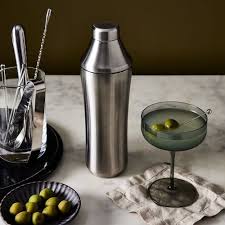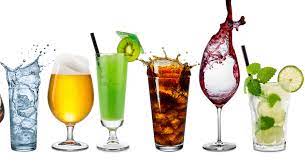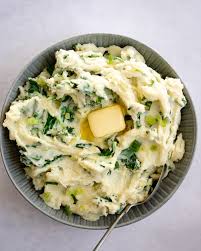Wines: A Journey Through Time, Terroir, and Taste
In the world of beverages, few can rival the rich history, complexity, and sheer pleasure that wines bring to our palates. From ancient vineyards to modern wineries, wine has captivated humanity for centuries, evolving into an art form that combines science, tradition, and a touch of magic.
One of the most fascinating aspects of wine is its ability to reflect the land from which it originates. The concept of terroir encompasses the unique combination of soil composition, climate, and topography that shapes a vineyard’s character. This notion holds true whether it’s the sun-drenched hills of Tuscany producing luscious Chiantis or the cool valleys of Napa Valley yielding elegant Cabernets.
Every sip tells a story—a story of the grape variety carefully cultivated by skilled viticulturists and nurtured by Mother Nature herself. It’s this marriage between grape and terroir that imbues wines with their distinctive flavors and aromas. From the crisp citrus notes of a Sauvignon Blanc to the velvety layers of a full-bodied Merlot, each varietal carries its own tale.
Wine appreciation goes beyond taste alone; it encompasses all our senses. The sight of ruby reds or golden hues swirling in a glass can be mesmerizing. The aroma that wafts up from the wine as it is gently swirled releases a symphony of scents—fruity, floral, earthy—enticing us to take that first sip.
And what a journey that sip takes us on! As we savor each mouthful, our taste buds dance with delight as they encounter an intricate balance of sweetness, acidity, tannins (for reds), and body. The finish lingers on our tongues like a lingering melody—a testament to the craftsmanship behind each bottle.
Wines are not just a beverage; they are a cultural emblem. They have been an integral part of celebrations, rituals, and social gatherings throughout history. They have inspired poets, artists, and philosophers to wax lyrical about their virtues. They have the power to bring people together, fostering connections and creating memories that last a lifetime.
Whether you’re a seasoned oenophile or just beginning your wine journey, there is always something new to discover. From exploring the diverse wine regions of the world to learning about different winemaking techniques, the world of wines is vast and ever-evolving.
So raise your glass and toast to the wonders of wines—the embodiment of nature’s bounty, human craftsmanship, and the joy of shared moments. Let each sip transport you to vineyards bathed in sunlight, rolling hills dotted with vines, and cellars filled with barrels aging gracefully.
In this timeless elixir lies a world waiting to be explored—one that invites us to slow down, savor life’s pleasures, and appreciate the beauty found in every bottle. Cheers!
9 Pros of Wines: Enhancing Flavors, Relaxation, Creating Lasting Memories, Exploring Variety, Health Benefits, Antioxidant Source, Fostering Social Connection, Adding to Special Occasions, Appreciating the Winemaking Process
- Wines can be a great accompaniment to food, helping to bring out the flavors of a dish.
- Wines are a great way to relax and unwind after a long day.
- Wine can be shared with friends and family, creating memories that will last forever.
- Wines come in many different varieties, giving you the opportunity to explore something new each time you try one.
- Drinking wine in moderation has been linked with numerous health benefits, such as reducing the risk of heart disease and stroke, and improving cognitive function.
- Wine is an excellent source of antioxidants which help protect against cell damage from free radicals in our bodies caused by environmental pollutants or stressors like smoking or UV radiation from the sun’s rays..
- Wine can help create conversation at social gatherings, making it easier for people to connect with one another over shared interests or experiences related to their favorite wines or wineries they’ve visited before..
- Enjoying wine can make special occasions even more memorable – whether it’s celebrating a birthday or anniversary with your loved ones, hosting dinner parties for friends, or just having a glass while relaxing on your own..
- Learning about wines is an enjoyable experience that allows you to appreciate all aspects of what goes into creating them – from the soil where grapes are grown to the aging process used by winemakers
6 Cons of Wines: Expensive, Health Risks, Not for Everyone, Timing, Storage Requirements, and Intimidating
- Expensive – Wines can be quite expensive, especially if you are looking for a high-quality vintage.
- Health Risks – Excessive consumption of alcohol can lead to serious health risks and even addiction.
- Not For Everyone – Some people have allergies or sensitivities to certain wines which can cause unpleasant reactions if consumed.
- Timing – Wine typically needs time to age properly, so it may not always be available when you want it.
- Storage Requirements – Wine needs to be stored in a cool, dark place in order to preserve its flavor and quality over time.
- Intimidating – The world of wine can seem intimidating for those who are unfamiliar with the different types, grapes, regions and more that go into making each bottle unique and special!
Wines can be a great accompaniment to food, helping to bring out the flavors of a dish.
Wines: Enhancing the Culinary Experience
When it comes to enhancing the pleasure of a meal, few things can compare to the perfect pairing of food and wine. The art of matching flavors and textures is a delicate dance that elevates both the dish and the drink, creating a harmonious symphony on our palates.
Wines have long been celebrated for their ability to complement and enhance the flavors found in various cuisines. From elegant whites to robust reds, each wine possesses unique characteristics that can either contrast or harmonize with the flavors of a dish.
The right wine can act as a catalyst, unlocking hidden nuances in food that may otherwise go unnoticed. It has the power to accentuate aromas, balance tastes, and cleanse the palate between bites. This synergy between food and wine creates an experience that is greater than the sum of its parts.
Consider a zesty Sauvignon Blanc paired with a fresh seafood salad. The wine’s vibrant acidity cuts through the richness of the seafood, enhancing its natural flavors while adding a refreshing zing. Or imagine a velvety Pinot Noir alongside a succulent roasted duck breast—the wine’s subtle earthiness complements the tender meat, creating an exquisite combination.
The key to successful food and wine pairing lies in understanding how different elements interact with one another. Factors such as acidity, sweetness, tannins (for red wines), and body all play crucial roles in determining how well they will complement or contrast with certain dishes.
It’s worth noting that there are no hard and fast rules when it comes to pairing food and wine. Personal preferences and individual palates can greatly influence which combinations work best for each person. Experimentation is encouraged—a delightful journey of trial and error that leads to discovering new flavor profiles and unexpected delights.
Fortunately, there are countless resources available to guide us on this culinary adventure. From sommeliers’ expertise to online guides and even smartphone apps, there’s no shortage of information to help us navigate the vast world of food and wine pairings.
So, the next time you sit down to enjoy a delicious meal, consider adding a bottle of wine to the table. Let it be your partner in culinary exploration—an accompaniment that enhances the flavors, elevates the experience, and creates moments of pure gastronomic bliss.
Whether it’s a casual dinner with friends or a special occasion, wines have the power to transform an ordinary meal into an extraordinary one. So raise your glass and toast to the joys of food and wine pairing—a celebration of flavors that tantalize our taste buds and ignite our senses. Cheers!
Wines are a great way to relax and unwind after a long day.
After a long, demanding day, there’s nothing quite like the soothing embrace of a glass of wine to help us unwind and find respite. Wines have long been cherished for their ability to provide a moment of relaxation and tranquility, offering a delightful escape from the stresses and strains of daily life.
The act of pouring a glass of wine itself can be therapeutic. The gentle glug as it fills the glass, the rich colors that dance in the light, and the enticing aromas that waft up—all contribute to creating an ambiance of relaxation. It’s as if each step in the process is designed to slow us down and encourage us to savor the moment.
As we take that first sip, our senses are awakened. The smooth texture caresses our palate, while the flavors unfold like a symphony—fruity notes mingling with hints of spice or earthiness. With each sip, we can feel the tension melting away, replaced by a sense of calmness and contentment.
Wines have an uncanny ability to transport us mentally to far-off places. A sip of an Italian Chianti might evoke images of rolling vineyards under the Tuscan sun, while a glass of French Bordeaux can whisk us away to charming châteaux nestled in picturesque countryside. The mere act of drinking wine becomes an invitation to embark on a sensory journey.
Moreover, wines are often enjoyed in good company—a catalyst for connection and conversation. Sharing a bottle with loved ones or friends allows us to unwind together, fostering bonds and creating memories that will be cherished for years to come. The clink of glasses and laughter fill the air as we collectively let go of our worries and immerse ourselves in moments of joy and camaraderie.
It’s important to note that moderation is key when indulging in this delightful ritual. Enjoying wine responsibly ensures that we can fully appreciate its benefits without any negative consequences. By savoring a glass or two, we can experience the relaxation and unwind without compromising our overall well-being.
So, the next time you find yourself longing for a moment of tranquility after a demanding day, consider reaching for a bottle of wine. Allow its transformative powers to wash away the stress and transport you to a place of serenity. Raise your glass, take a deep breath, and let the velvety elixir work its magic as you relax and unwind in its gentle embrace.
Wine can be shared with friends and family, creating memories that will last forever.
Wine: A Catalyst for Cherished Memories
In a world where time seems to slip through our fingers, there is one thing that has the power to bring us closer together and create lasting memories: wine. This beloved beverage has long been a symbol of celebration, friendship, and the joy of shared moments.
Imagine sitting around a table with loved ones, clinking glasses filled with ruby reds or golden whites. The sound of laughter fills the air as stories are exchanged and hearts are warmed. Wine has a unique ability to create an atmosphere of conviviality, breaking down barriers and fostering connections.
Whether it’s a special occasion or an impromptu gathering, wine sets the stage for unforgettable moments. From toasting to achievements and milestones to simply enjoying each other’s company on a lazy afternoon, every sip becomes a part of the collective memory woven into the fabric of our lives.
The act of sharing wine goes beyond just pouring liquid into glasses; it is an invitation to open up, connect, and truly be present with one another. As the wine flows freely, so does conversation. It becomes a catalyst for deeper connections and meaningful conversations that might not have taken place otherwise.
Wine also has a way of enhancing our experiences. It elevates meals from mere sustenance to culinary adventures, as flavors intermingle on our palates in perfect harmony. Pairing wines with food can be an art form in itself—a symphony of tastes that delights both the senses and the soul.
Moreover, exploring wines together can be an exciting journey of discovery. Tasting different varietals, discussing their nuances, and sharing personal preferences allows us to learn more about ourselves and each other. It becomes an opportunity for growth as we expand our knowledge and appreciation for this ancient elixir.
But perhaps what makes sharing wine truly special is its ability to transcend time. As we gather around the table with friends and family, we create memories that will last forever. We reminisce about past gatherings, raising our glasses in a collective toast to the moments that have shaped us.
So, let us raise a glass to the power of wine—the liquid thread that weaves together friendships, strengthens bonds, and creates memories that stand the test of time. May every sip be a reminder to cherish the present and embrace the joy of sharing life’s precious moments with those we hold dear. Cheers!
Wines come in many different varieties, giving you the opportunity to explore something new each time you try one.
Wines: A World of Variety, An Adventure in Every Glass
One of the greatest joys of being a wine enthusiast is the endless array of choices available. With countless grape varieties and winemaking styles, wines offer an exciting opportunity to embark on a journey of exploration with every sip.
Each bottle holds the promise of something new, a chance to discover flavors, aromas, and characteristics that may surprise and delight. From crisp whites to bold reds, sparkling wines to rosés, there is a wine for every occasion and palate.
The world of wine is vast and diverse. It spans across continents, with vineyards nestled in picturesque landscapes from France’s rolling hills to California’s sun-kissed valleys. Each region brings its own unique terroir, resulting in distinct expressions of grapes and flavors.
Exploring different wine varieties opens up a world of sensory experiences. You can indulge in the tropical fruit notes of a New Zealand Sauvignon Blanc or revel in the velvety richness of an Argentine Malbec. From the bright acidity of a Riesling to the smooth elegance of a Pinot Noir, each varietal offers its own captivating profile.
Not only do wines vary by grape variety, but they also showcase different winemaking techniques. Whether it’s oak aging that imparts complexity and depth or fermentation methods that influence texture and flavor development, each approach adds another layer to the story told by the wine.
The beauty of this diversity lies in its ability to cater to individual preferences and pairings with various cuisines. Wines can enhance dining experiences by complementing flavors or providing contrasting elements that elevate dishes to new heights.
Moreover, exploring different wines can be an educational experience. It allows you to develop your palate, expand your knowledge about grape varieties and regions, and gain insights into winemaking practices from around the world.
So why not embrace this pro of wines? Step out of your comfort zone, venture into uncharted territories, and let your taste buds guide you on a delightful adventure. Whether you’re a novice or a seasoned connoisseur, there is always something new to discover in the vast world of wines.
With each bottle uncorked, you have the opportunity to embark on a sensory exploration, discovering nuances and expanding your appreciation for the artistry that goes into every sip. So raise your glass and toast to the endless possibilities that wines offer—a journey of discovery that never ceases to amaze. Cheers!
Drinking wine in moderation has been linked with numerous health benefits, such as reducing the risk of heart disease and stroke, and improving cognitive function.
Indulging in a glass of wine can be more than just a delightful experience for the senses; it can also offer a range of health benefits when consumed in moderation. Research has shown that enjoying wine responsibly is associated with various positive effects on our well-being.
One notable advantage is the potential reduction in the risk of heart disease and stroke. Moderate wine consumption, particularly red wine, has been linked to improved cardiovascular health. The presence of antioxidants, such as resveratrol and polyphenols, found in red wine may help protect against heart-related conditions by reducing inflammation and promoting healthy blood vessel function.
Furthermore, studies suggest that moderate wine consumption can have a positive impact on cognitive function. The antioxidants present in wine may help combat oxidative stress and inflammation in the brain, potentially reducing the risk of cognitive decline and neurodegenerative diseases like Alzheimer’s.
It’s important to note that moderation is key when it comes to reaping these health benefits. The American Heart Association defines moderate drinking as up to one drink per day for women and up to two drinks per day for men. Consuming excessive amounts of alcohol can have detrimental effects on health, outweighing any potential benefits.
In addition to its potential health advantages, enjoying a glass of wine can also enhance social interactions and contribute to overall well-being. Sharing a bottle with loved ones or savoring a glass after a long day can promote relaxation and create moments of joy and connection.
As with all things related to health, it’s essential to consult with healthcare professionals regarding individual circumstances or concerns. While moderate wine consumption may offer certain benefits, it is not a substitute for a healthy lifestyle that includes regular exercise, balanced nutrition, and other recommended practices.
So raise your glass responsibly and toast to the potential advantages that moderate wine consumption may bring—supporting heart health, preserving cognitive function, and adding an extra touch of enjoyment to life’s precious moments. Cheers!
Wine is an excellent source of antioxidants which help protect against cell damage from free radicals in our bodies caused by environmental pollutants or stressors like smoking or UV radiation from the sun’s rays..
Wine’s Antioxidant Power: A Shield Against Cell Damage
In the quest for a healthy lifestyle, we often seek out ways to fortify our bodies against the harmful effects of free radicals—those pesky molecules that can wreak havoc on our cells. Enter wine, a delightful elixir that not only satisfies our taste buds but also offers a powerful defense against oxidative stress.
One of the key benefits of wine lies in its abundance of antioxidants. These compounds play a crucial role in neutralizing free radicals, which are generated by environmental pollutants, stressors like smoking, and even exposure to UV radiation from the sun’s rays. By doing so, antioxidants help protect our cells from damage and maintain their optimal functioning.
The star antioxidant found in wine is resveratrol—a polyphenol that has gained considerable attention in recent years. Resveratrol is known for its potential health benefits, including anti-inflammatory properties and cardiovascular protection. It has even been linked to longevity in some studies.
Red wines tend to have higher levels of resveratrol compared to white wines because the grape skins are left on during fermentation, allowing more contact between the juice and the skins. However, it’s important to note that while wine can be a source of antioxidants, it should be consumed in moderation as part of a balanced lifestyle.
It’s worth mentioning that wine is not the only source of antioxidants available to us. A diverse diet rich in fruits, vegetables, whole grains, nuts, and seeds can also provide an array of these beneficial compounds. However, for those who enjoy an occasional glass of wine, this antioxidant boost is an added bonus.
As with any dietary consideration or health claim, it’s essential to consult with healthcare professionals and make informed choices based on individual needs and circumstances. While wine can offer antioxidant benefits when consumed responsibly as part of a healthy lifestyle, it should never be seen as a substitute for other essential aspects of well-being, such as a balanced diet and regular exercise.
So, the next time you raise a glass of wine, savor not only its flavors but also the potential protective power it offers. Let it be a reminder that even in the realm of indulgence, there can be hidden benefits. Cheers to enjoying life’s pleasures while taking care of our bodies!
Wine can help create conversation at social gatherings, making it easier for people to connect with one another over shared interests or experiences related to their favorite wines or wineries they’ve visited before..
Wine: A Catalyst for Connection and Conversation
In a world filled with bustling social gatherings, finding common ground and fostering connections can sometimes feel like a daunting task. However, there is one elixir that has the remarkable ability to break down barriers and spark engaging conversations—wine.
At any social gathering, whether it’s a dinner party, a networking event, or a casual get-together with friends, wine often takes center stage. Beyond its delightful taste and sophisticated allure, wine has the power to bring people together over shared interests and experiences.
As glasses are raised and bottles are uncorked, the conversation flows effortlessly. People find themselves drawn into discussions about their favorite wines, wineries they’ve visited before, or even memorable tasting experiences. The mere mention of a particular vintage or region can ignite passionate exchanges among enthusiasts.
The beauty of wine lies in its ability to transcend boundaries. It doesn’t discriminate based on age, profession, or background. Instead, it invites everyone to partake in its rich tapestry of flavors and stories. Whether you’re an experienced connoisseur or just starting your journey into the world of wine appreciation, there is always something to discuss and learn from one another.
Sharing anecdotes about vineyard visits or reminiscing about that unforgettable bottle enjoyed on a special occasion creates an instant connection among wine lovers. These shared experiences become bridges that enable deeper conversations beyond the superficialities of everyday life.
Moreover, discussing wines can also serve as an icebreaker for those who may feel shy or uncertain in social settings. The universal language of wine provides a comfortable starting point for individuals to share their thoughts and opinions without fear of judgment. It opens doors to new friendships and strengthens existing bonds as people discover common interests and passions.
In addition to fostering connections between individuals, wine also encourages exploration and curiosity. As conversations unfold around different varietals, regions, or winemaking techniques, people are inspired to expand their knowledge and try new wines. This shared enthusiasm fuels a collective desire to learn, discover, and appreciate the vast world of wine.
So, the next time you find yourself at a social gathering, consider the power of wine as a catalyst for connection. Raise your glass and engage in conversations about your favorite wines or memorable winery visits. Allow wine to create an atmosphere of warmth, camaraderie, and shared experiences.
In this age-old elixir lies the potential to bridge gaps, foster connections, and create lasting memories. Let wine be your companion as you embark on a journey of conversation and connection with those around you. Cheers!
Enjoying wine can make special occasions even more memorable – whether it’s celebrating a birthday or anniversary with your loved ones, hosting dinner parties for friends, or just having a glass while relaxing on your own..
There’s something about the clink of glasses and the gentle swirl of wine that adds an extra touch of magic to any special occasion. Whether you’re toasting a milestone birthday, commemorating an anniversary with your loved ones, hosting a dinner party for friends, or simply unwinding on your own, enjoying a glass of wine can elevate these moments into cherished memories.
Wine has long been associated with celebrations and gatherings, and for good reason. It has the power to enhance the flavors of a delicious meal, bringing out subtle nuances and creating a harmonious culinary experience. The right wine can complement the richness of a perfectly cooked steak or highlight the delicate flavors of a seafood dish. It becomes an integral part of the dining experience, elevating it to new heights.
But wine is not just about pairing with food; it also serves as a catalyst for connection and conversation. When shared among friends or family, it creates an atmosphere of conviviality and camaraderie. As glasses are raised in celebration, stories are shared, laughter fills the air, and bonds are strengthened.
Even when enjoyed in solitude, wine can be a source of relaxation and reflection. It offers a momentary escape from the demands of everyday life—a chance to unwind and savor some much-needed “me” time. With each sip, worries melt away as you immerse yourself in the sensory experience that wine provides.
Beyond its taste and aromas, wine carries with it a sense of history and tradition. Each bottle tells its own story—a story that spans generations and continents. From vineyards that have weathered centuries to winemakers who have honed their craft through generations of knowledge passed down, every bottle represents a labor of love.
So whether you’re raising your glass in celebration or seeking solace in quiet contemplation, let wine be your companion on life’s special occasions. Let it add that extra sparkle to birthdays filled with laughter, anniversaries overflowing with love, and dinner parties brimming with warmth and hospitality. And in those quiet moments of solitude, let it be a reminder to savor life’s simple pleasures.
Cheers to the magic of wine—a timeless elixir that turns ordinary moments into extraordinary memories.
Learning about wines is an enjoyable experience that allows you to appreciate all aspects of what goes into creating them – from the soil where grapes are grown to the aging process used by winemakers
Learning About Wines: A Journey of Appreciation
Embarking on a journey to learn about wines is not only an enriching experience but also a delightful one. It opens the door to a world where you can truly appreciate all the intricate aspects that contribute to the creation of this beloved beverage. From the very soil where grapes are grown to the meticulous aging process employed by skilled winemakers, every step in the wine production journey holds its own charm.
Exploring wines allows you to develop a deeper understanding of the connection between terroir and taste. You’ll discover how different soil compositions, climates, and geographical factors shape the flavors and aromas found in each bottle. From the mineral-rich soils of Burgundy that produce elegant Pinot Noirs to the volcanic slopes of Sicily that give birth to vibrant Nero d’Avolas, you’ll come to appreciate how nature’s influence manifests in every sip.
As you delve into the world of wines, you’ll encounter various grape varieties with their own unique characteristics. Each grape brings its own personality and flavor profile to the wine it produces. Whether it’s the crisp acidity of a Riesling or the bold fruitiness of a Shiraz, learning about different grape varieties expands your palate and allows you to discover your personal preferences.
Understanding winemaking techniques is another fascinating aspect of exploring wines. From traditional methods passed down through generations to innovative approaches that push boundaries, each technique contributes to the final product in its own way. The aging process, for example, plays a crucial role in developing complexity and enhancing flavors. Whether it’s oak barrels or stainless steel tanks, each vessel imparts its distinct influence on the wine.
Beyond taste alone, learning about wines also offers insights into cultural traditions and history. Wine has been an integral part of human civilization for thousands of years, woven into social customs and celebrations across cultures. Exploring different wine regions allows you to immerse yourself in the rich tapestry of traditions and stories that have shaped these vibrant wine-growing areas.
Moreover, learning about wines is a journey that can be shared with others. It provides an opportunity to connect with fellow enthusiasts, share recommendations, and engage in lively discussions about favorite bottles or new discoveries. Wine tastings and events offer a chance to expand your knowledge while enjoying the company of like-minded individuals.
In conclusion, delving into the world of wines is not only an enjoyable experience but also a gateway to appreciating the craftsmanship and artistry behind each bottle. From understanding the influence of terroir to unraveling the winemaking process, every aspect adds depth to your appreciation. So raise a glass, savor the flavors, and embark on this delightful journey of learning and discovery. Cheers!
Expensive – Wines can be quite expensive, especially if you are looking for a high-quality vintage.
Expensive: The Price Tag of Fine Wines
While the world of wines offers a delightful array of flavors and experiences, it’s important to acknowledge that this indulgence can come at a cost. One con often associated with wines is their price, particularly when seeking out high-quality vintages.
It’s no secret that fine wines can be quite expensive. The craftsmanship, time, and attention to detail required to produce exceptional bottles contribute to their higher price tags. From meticulously tended vineyards to carefully controlled fermentation processes and extended aging periods, the journey from grape to glass is a labor-intensive one.
Moreover, factors such as limited production quantities, rarity of certain grape varieties or regions, and the influence of market demand can further drive up prices. Collectors and enthusiasts willing to pay a premium for exclusive bottles often find themselves navigating a world where scarcity adds value.
However, it’s worth noting that not all wines come with an exorbitant price tag. There are plenty of excellent options available at more affordable price points that still offer enjoyable drinking experiences. Exploring lesser-known regions or opting for younger vintages can be rewarding for those seeking quality without breaking the bank.
Furthermore, wine appreciation is subjective, and what may be considered high-quality by one person may not necessarily align with another’s preferences. Expensive does not always equate to superior taste; it simply reflects a combination of factors such as reputation, rarity, and perceived value.
For those passionate about wine but mindful of their budget, there are various strategies one can employ. Seeking out recommendations from trusted sources or knowledgeable sommeliers can help identify hidden gems within a reasonable price range. Additionally, attending tastings or joining wine clubs can provide opportunities to explore different styles without committing to full bottle purchases.
Ultimately, while the expense associated with high-quality vintage wines may deter some individuals from fully immersing themselves in this world, it’s essential to remember that enjoyment and appreciation of wine can be found at various price points. Whether it’s a modestly priced bottle shared with friends or a special occasion splurge, the experience of savoring a well-crafted wine is accessible to all who seek it.
So, while the cost of wines may present a con for some, exploring the vast range of options available can still lead to discovering affordable treasures that provide immense pleasure and satisfaction. Cheers to finding the perfect balance between quality and value in every glass!
Health Risks – Excessive consumption of alcohol can lead to serious health risks and even addiction.
While wines are celebrated for their flavors, aromas, and the joy they bring to our lives, it is important to acknowledge the potential health risks associated with excessive consumption. Like any alcoholic beverage, wine should be enjoyed responsibly and in moderation.
Excessive alcohol consumption can have detrimental effects on our health. It can lead to a range of physical and mental health issues, including liver damage, cardiovascular problems, weakened immune system, increased risk of certain cancers, and gastrointestinal disorders. Moreover, heavy drinking can also contribute to mental health conditions such as depression and anxiety.
Addiction is another serious concern associated with alcohol abuse. Regularly consuming large quantities of wine or any other alcoholic beverage can lead to dependence and addiction. Alcohol addiction not only affects an individual’s physical health but also impacts their personal relationships, work performance, and overall quality of life.
It is crucial to understand that responsible wine consumption can be a part of a balanced lifestyle. Moderate wine consumption has even been linked to potential health benefits such as improved heart health due to the presence of antioxidants in red wine. However, it is essential to define what moderate drinking means: for men, it typically means up to two standard glasses per day; for women or individuals over 65 years old, it generally means up to one standard glass per day.
Awareness about responsible drinking practices should be promoted within society. Education on understanding one’s limits and recognizing the signs of alcohol abuse is vital in preventing the potential negative consequences associated with excessive wine consumption.
Ultimately, enjoying wines should be about appreciating their flavors and cultural significance while being mindful of our overall well-being. By practicing moderation and being aware of the potential risks involved with excessive alcohol intake, we can ensure that our enjoyment of wines remains a pleasurable experience without compromising our health.
Not For Everyone – Some people have allergies or sensitivities to certain wines which can cause unpleasant reactions if consumed.
Not For Everyone: Allergies and Sensitivities in the World of Wines
While wines are revered for their complexity, flavors, and ability to enhance our dining experiences, it’s important to acknowledge that they may not be suitable for everyone. Just as with any food or beverage, some individuals may have allergies or sensitivities that can lead to unpleasant reactions when consuming certain wines.
Allergies to wine can stem from various sources. One common culprit is sulfites, which are naturally occurring compounds used as preservatives in winemaking. Sulfites help maintain the freshness and stability of wines but can trigger allergic reactions in some individuals. These reactions may include headaches, nasal congestion, skin rashes, or even difficulty breathing for those with severe allergies.
Additionally, certain proteins found in grapes or yeast used during fermentation can cause allergic responses. These allergies may manifest as itching, hives, or gastrointestinal discomfort. It’s worth noting that while rare, these allergies do exist and can impact individuals’ ability to enjoy wines without adverse effects.
Beyond allergies, some people may experience sensitivities to specific components found in wines. For example, histamines present naturally in grape skins can lead to symptoms similar to those of seasonal allergies or migraines. Others might be sensitive to tyramine—a substance formed during fermentation—which has been linked to triggering headaches in susceptible individuals.
If you suspect you have an allergy or sensitivity related to wine consumption, it is essential to consult with a healthcare professional for proper diagnosis and guidance. They can help identify the specific triggers and recommend appropriate measures or alternatives that allow you to enjoy beverages without compromising your well-being.
Fortunately, wine producers are increasingly conscious of these concerns and have begun catering to individuals with specific dietary needs. Many wineries now offer low-sulfite or sulfite-free options for those sensitive to these compounds. Additionally, organic and biodynamic wines produced without synthetic additives may be more suitable for individuals seeking a more natural and potentially allergen-free option.
While it’s unfortunate that some people may have to navigate these challenges, it’s important to remember that there are still plenty of alternatives available. From exploring different wine varieties to seeking out specialized options, individuals with allergies or sensitivities can still find enjoyable alternatives within the world of wines.
In the end, it’s crucial to prioritize your health and well-being when it comes to consuming any food or beverage, including wine. By being aware of potential allergies or sensitivities and seeking appropriate guidance, you can make informed choices that allow you to indulge in the pleasures of the grape while keeping your comfort and safety in mind.
Timing – Wine typically needs time to age properly, so it may not always be available when you want it.
Timing – The Conundrum of Wine
Wine, with its myriad flavors and complexities, is often regarded as a beverage that improves with age. However, this very characteristic can sometimes be a double-edged sword. One of the cons of wine is its need for time to age properly, which means it may not always be readily available when you desire it.
Unlike many other beverages that can be enjoyed immediately after production, wine requires a patient waiting game. From the moment grapes are harvested and transformed into juice, they embark on a transformative journey that involves fermentation, maturation, and aging. These processes allow the wine to develop its unique characteristics and reach its full potential.
For certain types of wines, such as fine reds or vintage ports, this aging period can span several years or even decades. During this time, the wine undergoes chemical reactions that soften tannins, deepen flavors, and enhance aromas. It’s a delicate dance between time and nature that ultimately results in a more nuanced and enjoyable drinking experience.
However, this necessary aging process also means that not every bottle of wine will be available for immediate consumption. If you have your heart set on a specific vintage or style of wine but haven’t planned ahead or stocked your cellar accordingly, you may find yourself waiting longer than expected to enjoy it.
Furthermore, even if you do manage to acquire a well-aged bottle of wine from a reputable source or winery, there’s still the risk of disappointment if it hasn’t been stored properly over time. Wine is sensitive to temperature fluctuations, light exposure, and improper storage conditions. So even if you’re lucky enough to find an older vintage on the market or in a restaurant’s cellar, there’s no guarantee it will have aged gracefully.
The timing conundrum of wines highlights the importance of planning ahead and understanding your preferences when it comes to enjoying this beloved beverage. If you’re someone who appreciates the nuances of aged wines, it’s wise to start building a collection or seeking out reputable wine merchants who can assist you in sourcing well-aged bottles.
On the other hand, if you prefer wines that are ready to drink upon release, there is an abundance of young and vibrant options available. Many winemakers craft their wines to be approachable and enjoyable in their youth, allowing you to indulge in the pleasures of wine without the need for extensive aging.
In the world of wine, timing is everything. While it may be frustrating at times to wait for a bottle to reach its peak, it’s also part of what makes wine so intriguing and rewarding. So whether you’re savoring a well-aged vintage or delighting in a youthful pour, remember that every bottle has its own unique journey, waiting for the perfect moment to be uncorked and enjoyed.
Storage Requirements – Wine needs to be stored in a cool, dark place in order to preserve its flavor and quality over time.
Storage Requirements: The Key to Preserving Wine’s Delightful Essence
When it comes to wine, proper storage is essential in maintaining its flavor and quality over time. While wines may be a delightful companion for special occasions or a simple evening indulgence, they require specific conditions to age gracefully and develop their full potential.
One of the primary considerations in wine storage is temperature. Wine is sensitive to extreme heat or fluctuations in temperature, as these can cause chemical reactions that alter its taste and aroma. Ideally, wines should be stored in a cool environment, with temperatures ranging between 45°F (7°C) and 65°F (18°C). This moderate climate helps slow down the aging process, allowing the wine to mature harmoniously.
Equally important is darkness. Exposure to light, especially ultraviolet (UV) rays, can degrade wine by breaking down organic compounds and causing unpleasant flavors. To shield wines from light damage, it’s best to store them in a dark place or use tinted glass bottles that offer protection against UV rays.
Humidity levels also play a role in proper wine storage. Excessive dryness can dry out corks, leading to oxidation and spoilage of the wine. On the other hand, excessive humidity can promote mold growth on labels or even seep through corks, affecting the quality of the wine. Aim for a relative humidity level of around 60-70% to strike the right balance.
Another factor to consider is stability. Wines should be stored in an area where they are shielded from vibrations or movement. Constant shaking or disturbance can disrupt sediment settling and negatively impact the aging process.
To ensure ideal storage conditions, many enthusiasts turn to dedicated wine cellars or refrigerated units specifically designed for this purpose. These controlled environments provide consistent temperature and humidity levels while protecting wines from light exposure.
However, not everyone has access to such specialized facilities. If you don’t have a wine cellar or a designated storage area, there are still steps you can take to preserve your wines. Find a cool, dark spot in your home, away from direct sunlight and heat sources like radiators or appliances. Consider using wine racks or cabinets that provide stability and help organize your collection.
Remember, proper storage is not limited to expensive or aged wines; it applies to all types and price ranges. Whether you’re storing a bottle for a few months or several years, following these guidelines will help ensure that each sip delivers the intended flavors and aromas.
So, next time you bring home a bottle of wine to enjoy at a later date, remember the importance of storage requirements. Treat your wines with care, providing them with the optimal conditions they deserve. By doing so, you’ll be rewarded with the pleasure of savoring wines that have gracefully matured into liquid works of art.
Intimidating – The world of wine can seem intimidating for those who are unfamiliar with the different types, grapes, regions and more that go into making each bottle unique and special!
Intimidating – Unlocking the Secrets of the World of Wine
For those who have yet to venture into the world of wines, it can be an intimidating place. The sheer variety of types, grapes, regions, and more can leave newcomers feeling overwhelmed and uncertain. However, with a little guidance and exploration, this intimidating facade can quickly transform into an exciting journey of discovery.
One of the first hurdles to overcome is understanding the different types of wines. From reds to whites, rosés to sparkling varieties, each type offers its own distinct characteristics and flavors. Exploring these categories one by one can help demystify the choices available and allow for a more focused exploration.
Grapes play a significant role in shaping a wine’s profile. Varieties such as Cabernet Sauvignon, Chardonnay, Merlot, and Pinot Noir are just a few examples that bring their own unique qualities to the glass. Learning about grape varieties and their typical flavor profiles can provide a helpful starting point for understanding wine labels and selecting bottles that align with personal preferences.
Regions also play a crucial role in defining wines. Different areas around the world have their own microclimates, soils, and winemaking traditions that contribute to distinct regional styles. While it may be impossible to become an expert on every wine region overnight, exploring wines from different parts of the world gradually can be an enjoyable way to expand knowledge.
The good news is that wine education resources abound for those looking to learn more. Books, online courses, tastings at local wineries or wine shops—these are all valuable tools that can help break down barriers and build confidence when it comes to navigating the vast world of wines.
It’s essential to remember that everyone starts somewhere on their wine journey. No one becomes an expert overnight or without making a few missteps along the way. Embracing this learning process with an open mind allows for growth and a deeper appreciation of the complexities that make each bottle unique and special.
So, for those who find the world of wine intimidating, take heart. With a little curiosity, willingness to explore, and guidance from knowledgeable sources, what initially seemed daunting can transform into an exciting adventure. Raise a glass and toast to new discoveries, as the world of wines awaits with open arms.











